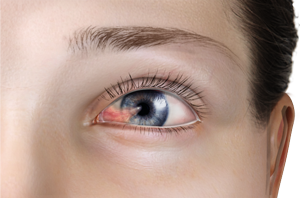66 Pacific Hwy
ST LEONARDS NSW 2065
Fax: 02-8412 0060

A pterygium is fleshy tissue that grows in a triangular shape over the cornea (the transparent part or front window of the eyeball). It may grow large enough to interfere with vision. A pterygium most commonly occurs on the inner corner of the eye, with its apex towards the pupil, but also may appear on the outer corner.
The exact cause is not well understood. Long-term exposure to sunlight, especially ultraviolet (UV) rays, and chronic eye irritation from dry, dusty conditions seem to play an important role. Hence Pterygium occurs more often in people who spend a great deal of time outdoors, especially in sunny climates. A dry eye may contribute to pterygium as well.
When a pterygium becomes red and irritated, eye drops or ointments, which can be spread in the eye, may be used to smooth the inflammation. Large enough pterygia which threaten sight, grows or is unsightly, can be removed surgically.
It may occur that despite proper surgical removal the pterygium returns. That affects particularly young people. To help prevent recurrences surface radiation or medications are sometimes used.
Wearing UV protective sunglasses and avoiding dry and dusty conditions as well as the use of artificial tears may also help.
A pinguecula is a small yellow growth on the white of the eye near the edge of the cornea, usually on the nasal (nose) side. However, a pinguecula does not actually grow onto the cornea such as a pterygium, and it is not a tumour. It is an alteration of normal tissue resulting in a deposit of protein and fat. It is a condition affecting particularly older people.
A pinguecula may also be caused by chronic eye irritation or sunlight.
As a pinguecula does not grow onto the cornea nor threaten sight, no treatment is necessary unless it becomes inflamed. On very rare occasions a pinguecula may be surgically removed for cosmetic reasons or if particularly annoying. However, the post-operation scar may be as cosmetically objectionable as the pinguecula.
Regular medical eye examinations are important for everyone, as eye disease can occur at any age. Often the patient does not realise symptoms unless the disease has done damage. Therefore, if diagnosed and treated early, most blindness is preventable.














